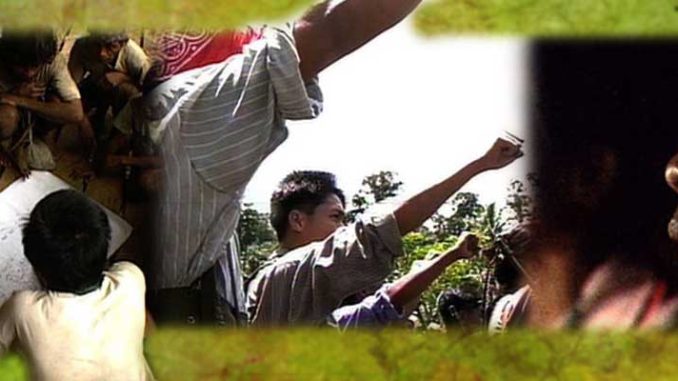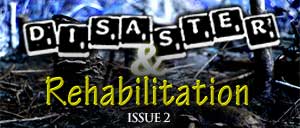
“Bendum: In the Heart of Mindanao”
Anthony Collins
Color. English. 29 min.
IE Film and Video Company, 2001
Available from Documentary Educational Resources www.der.org
Documentary film audiences are generally people concerned with a particular issue or a specific place where real-life drama is played out. A documentary’s title is an important tool in both locating and creating that film’s audience. It is therefore striking that “Bendum: In the Heart of Mindanao” mentions the locale and region where an upland (Lumad) community struggles to take control of local forest management, but makes no reference to the country the Lumad inhabit—the Philippines. Perhaps this choice defers to the increasingly vocal “Mindanawan” resentment of Manila-based elites who, in conjunction with local lowland politicians, have bequeathed uneven political rule, aggressive exploitation of resources, and heavy militarization to this second largest island of the Philippines. Perhaps it also reflects the filmmakers’ desire to give comparatively greater weight to “local” dimensions, not just of the community’s problems but of their solutions as well—reforestation and cultural, economic, and political self-strengthening.
The tiny village of Bendum is located in northern Mindanao’s Pantaron mountain range in the upper Pulangi river basin. From the 1990s, Bendum’s Lumad community has been implementing community-managed reforestation in the wake of logging which brought roads and the cash economy and left environmental degradation and pressure from lowland migrants. Various community members—young and old, male and female—tell the filmmaker about cultural and economic changes wrought by this government-backed logging. In response to the deforestation, Bendum now cultivates sudsud, which provides reeds for woven mats, and abaca, from which clothing, rope, and bags can be made. The weaving of products for commercial sale helps the Lumad combine tradition and survival in the cash economy, and the abaca helps regenerate secondary forest. But while the Lumad have changed their attitude toward ownership—even within the community, products are sold which used to be given away—they still subsist on the fringes of the cash economy. Their objective is clear: to improve their own situation while regenerating and protecting the forest.
To some extent, the film localizes this story by keeping the narrative firmly linked to the actions and voices of the people of Bendum. In other ways, “Bendum” globalizes it by producing a film for an international audience featuring outside commentators—environmentalists, “experts,” and advocates of the Lumad who are critical of mainstream development. The message is surprisingly upbeat: here is a marginalized upland community that has taken steps to improve its condition, cultivating forest crops which can help sustain the environment while producing commercially-valued goods. This Lumad community has struck the very difficult balance between its immediate, market-driven needs and the longer-term need for sustainable forests to which its cultural and economic fate is bound. Though the issue of legal title to the land is pressing, the film suggests that the Lumad have proceeded with their initiatives without waiting for the slow-paced government to issue titles.
The longer-term consequences of living and working in a legally ambiguous condition are unexplored here. One is left with the impression that Bendum’s successes will accrue into a de-facto claim to ownership. However, the mired history of land disputes and land titling in Mindanao call for a clearer exploration of this issue. Mindanao’s frontier-style development in the 1940s, 50s, and 60s resulted in frequent conflicts over land between indigenous populations, new settlers, and corporate agriculture. Changes in land-use and land-ownership (or lack thereof) lay at the root of disputes which have escalated into communal divisions between Muslims and other minorities and the expanding Christian-settler majority. Toward the end of the film, acclaimed investigative journalist Marites Vitug refers to animosities that result in rebellion and migration to crowded urban areas. But for the most part, the film frames the land-use issue in Bendum in terms of de- and re-forestation.
By locating the people of Bendum not in reference to the Philippines but in relation to their forest and the island of Mindanao, the film evades or downplays the role of central state power. This seems very much in keeping with the current trend of treating environmental issues as both transnational and supra-national. Indeed, environmental problems very often extend beyond the nation’s borders and concern resources which, in their original forms in nature, transcend the nations and states which are of recent making.
Reviewed by Coeli Barry and Donna Amoroso
Coeli Barry is currently Visiting Assistant Professor at Cornell University’s Southeast Asia Program. Donna Amoroso is on the editorial board of the Kyoto Review of Southeast Asia.
Kyoto Review of Southeast Asia. Issue 2 (October 2002). Disaster and Rehabilitation

